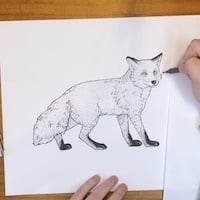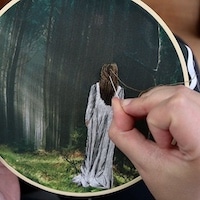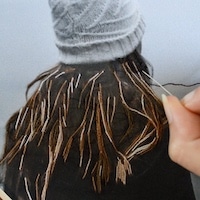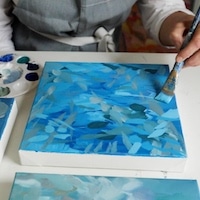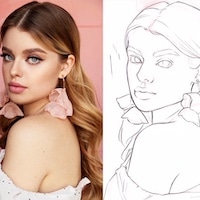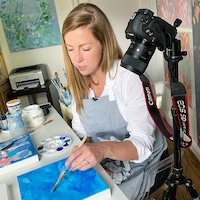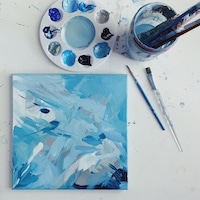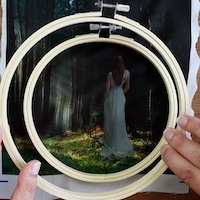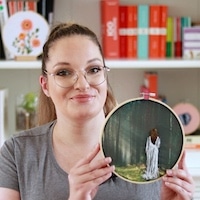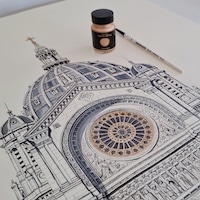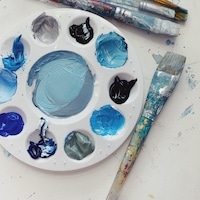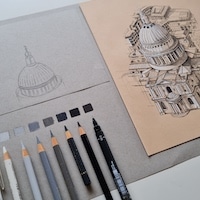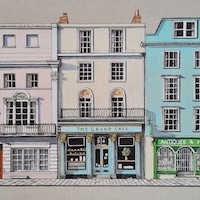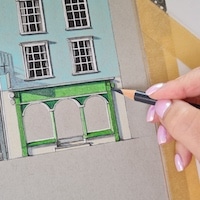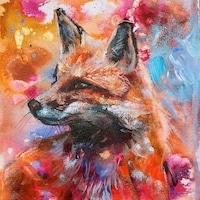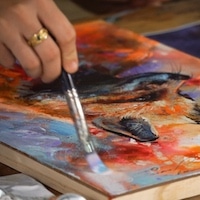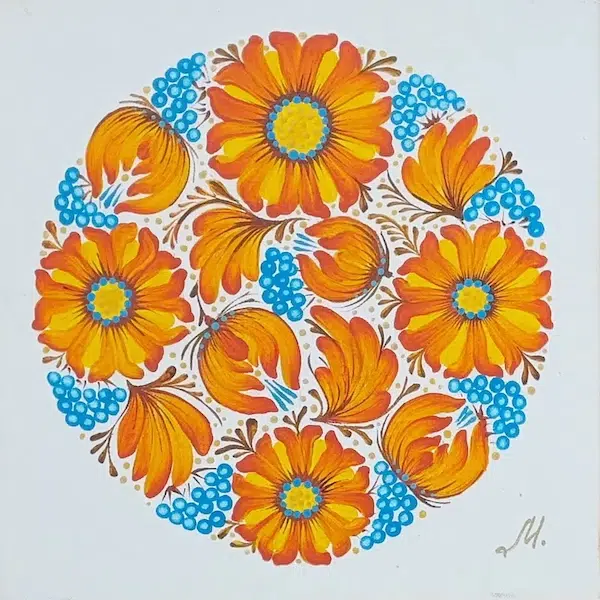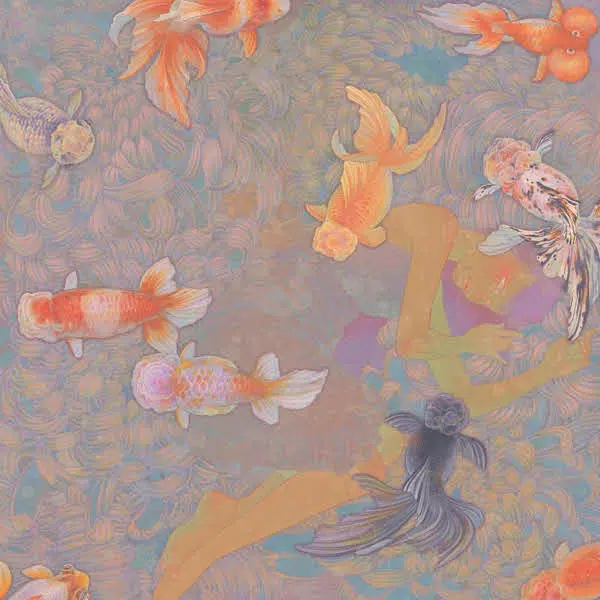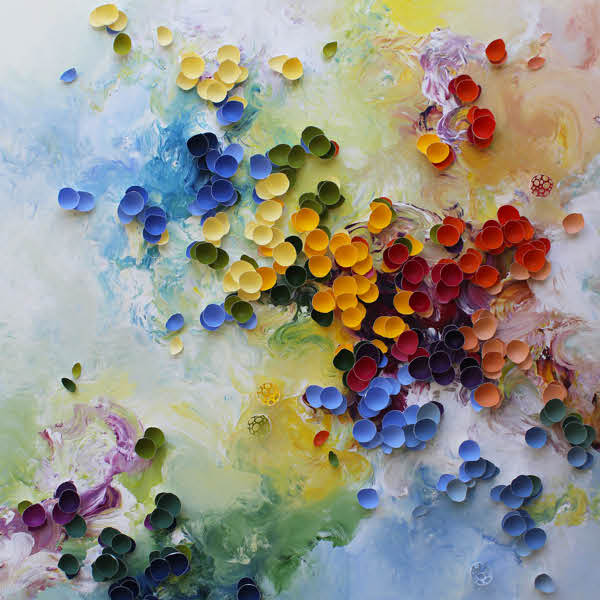
“The Red House,” 2024.
Over two decades ago, in 1999, Scott Listfield was watching Stanley Kubrick’s 2001: A Space Odyssey for the first time, tucked inside his small studio apartment in Boston. Up until then, he was living, studying, and traveling abroad for two years, never quite finding a sense of belonging. But the film stirred something within Listfield, prompting him to turn to painting as a way to capture his experiences with adventure, solitude, and awe. It also didn’t take long for him to settle on who his work’s protagonist would be.
“[When] I watched 2001, it all fell into place,” Listfield tells My Modern Met. “I’d take the astronauts from the fictional 21st century, and I’d place them in the real 21st century.”
Today, Listfield has become known for his surreal scenes of astronauts wandering through desolate yet nevertheless breathtaking landscapes. In Listfield’s fantastical world, astronauts contend with hollowed-out apartment buildings; impossibly large moons that circle in the sky overhead; strange, technicolor clouds; and dramatic monoliths that seem to suggest the dissolution of civilization. And, though the settings themselves may change across his work, Listfield is still careful to maintain consistency; after all, his astronaut appears in each and every single one of his paintings.
“The astronaut [is] a guide, a stand-in for the viewer, and a reminder that no matter how bleak things may get, how dystopian, how far off into the future I travel, there is always still a human there,” the artist explains. “The astronaut represents everything that the future could or should be, and also everything that it is not.”
Indeed, even in his most bizarre and unsettling compositions, Listfield’s astronaut stands as a single trace of humanity. In Monolith, for instance, an astronaut surveys a vast desert, the remains of a city looming in the distance. Ahead of him is an abandoned McDonald’s, a group of bison, and a massive rock bearing an enigmatic inscription. This is a world of absence and desertion, where even a brand as successful as McDonald’s and a city with several skyscrapers have failed to find life. Still, animals exist, the desert is serene, and the horizon holds promise.
It’s clear that hope and optimism toward the future ground Listfield’s work, even if it strikes us as outwardly bleak. If anything, his paintings can also be read as warnings, especially amid our fraught reality.
“We have electric doodads in our pockets with all the world’s information in it. Robots are delivering food and driving taxis. Billionaires are blowing up rocket ships. People think AI is a good idea. Climate scientists are warning us about pending disasters and we are smugly ignoring them,” Listfield says. “All we’re missing is an alien invasion, and this is the opening act of every science fiction movie ever.”
Even so, Listfield doesn’t paint to exacerbate feelings of doom. Rather, his work is an invitation to rethink our current state.
“I make paintings about these things in part because we can still change the future,” he explains. “I mean, as long as we’re still in that first act.”
To learn more about his art and practice, visit Scott Listfield’s website.
For over two decades, Scott Listfield has painted desolate, fantastical scenes of the future populated by a sole astronaut.

“Monolith,” 2024.

“Second Hand,” 2022.

“Elysian,” 2021.

“We Who Remain,” 2024.
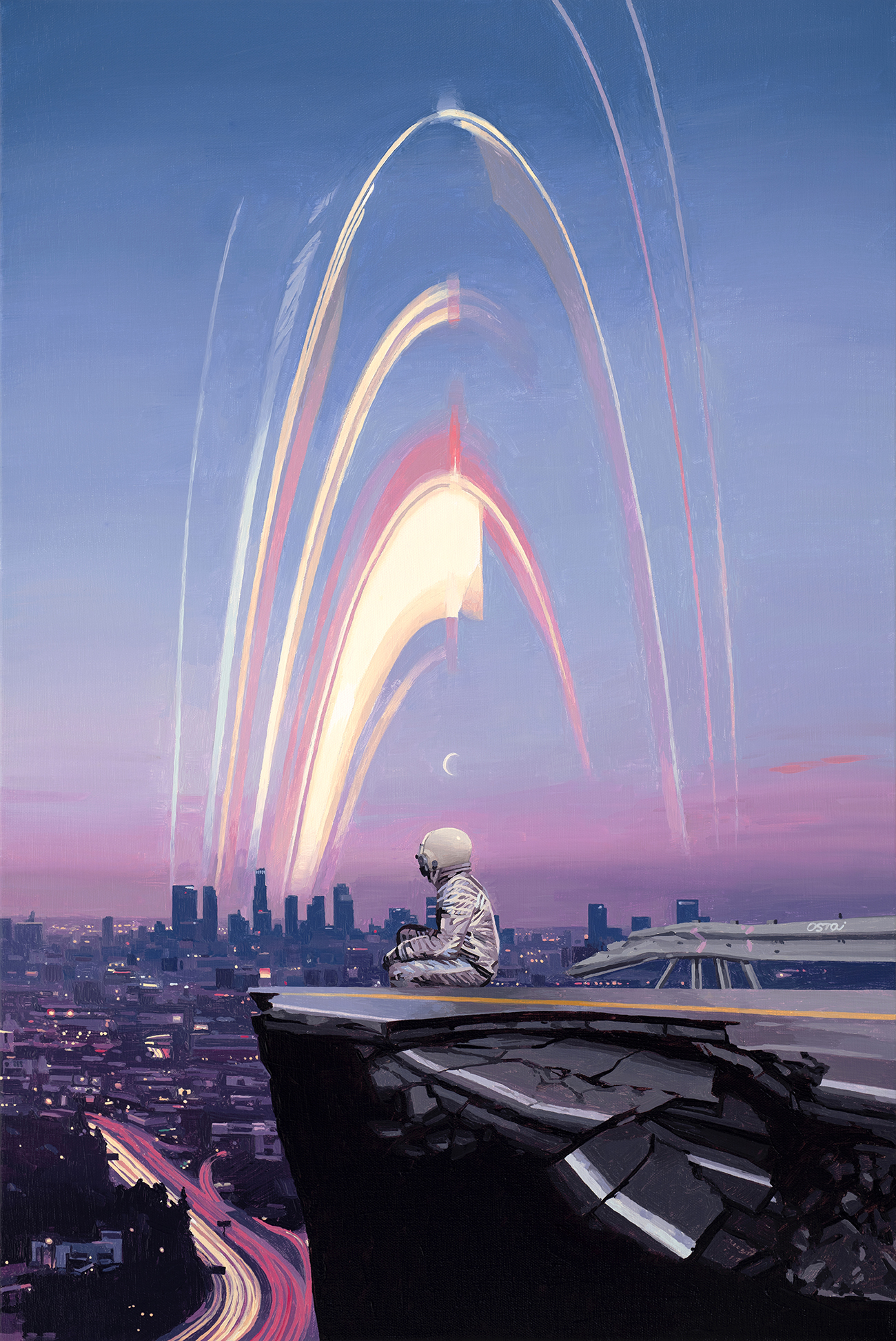
“Lost Highway,” 2022.
Listfield first gravitated toward astronauts as a symbol of solitude, exploration, and longing after watching 2001: A Space Odyssey in 1999.

“Pink and Purple Evening,” 2023.

“Stegosaurus,” 2022.

“Oculus,” 2024.

“Moonfall,” 2024.
Now, the Los Angeles-based artist has become known for the surreal worlds he conjures throughout his work.
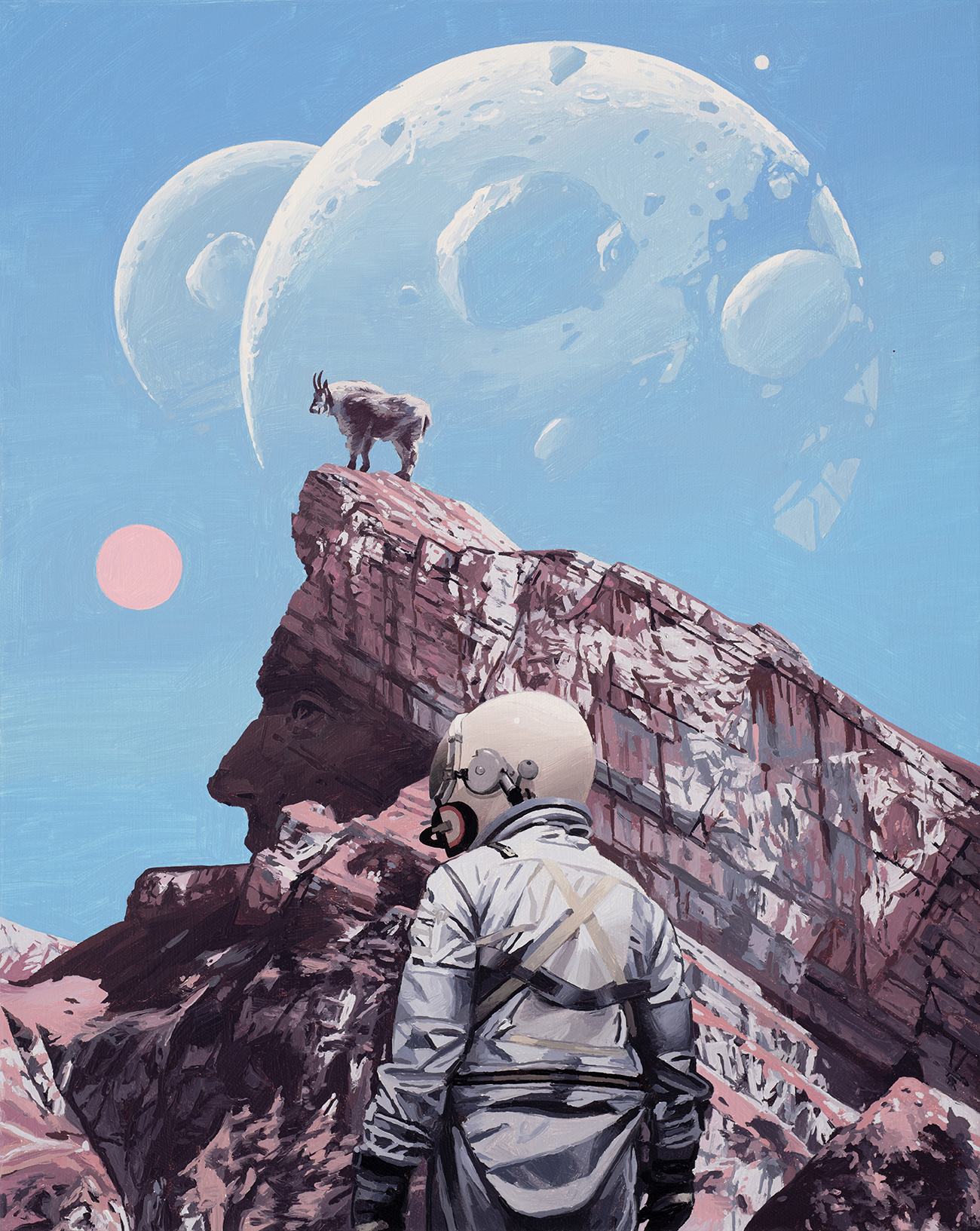
“Old Man of the Mountain,” 2024.

“Head in the Clouds,” 2023.

“Golden Gate,” 2025.

“The Equinox,” 2023.
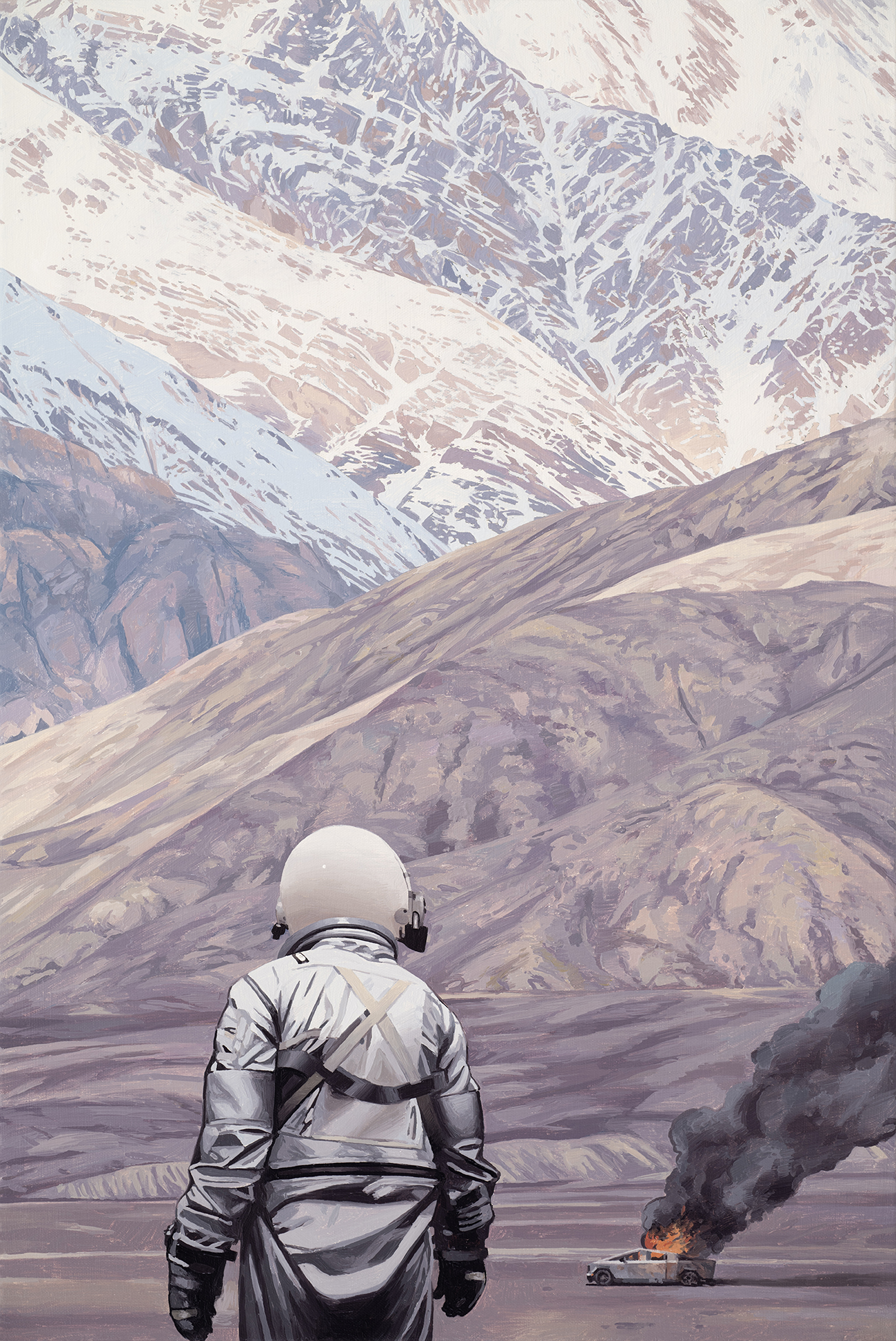
“Cybertruck on Fire,” 2025.











